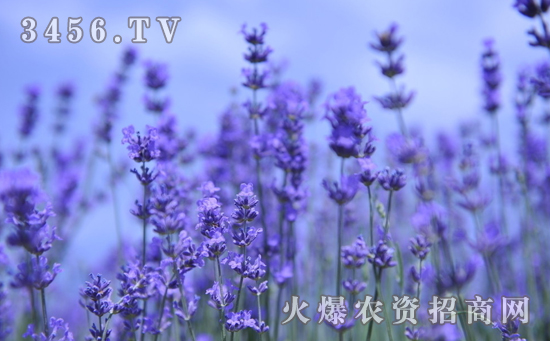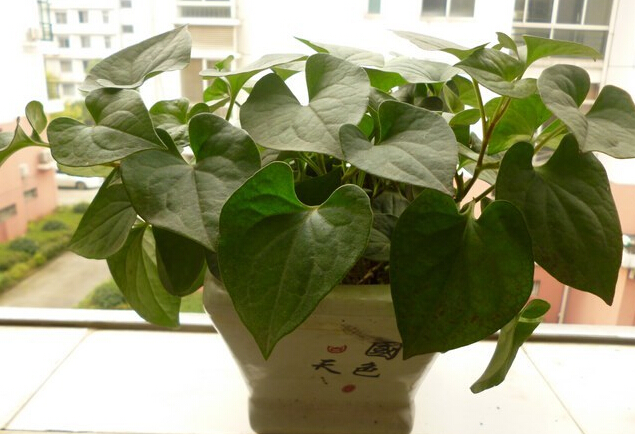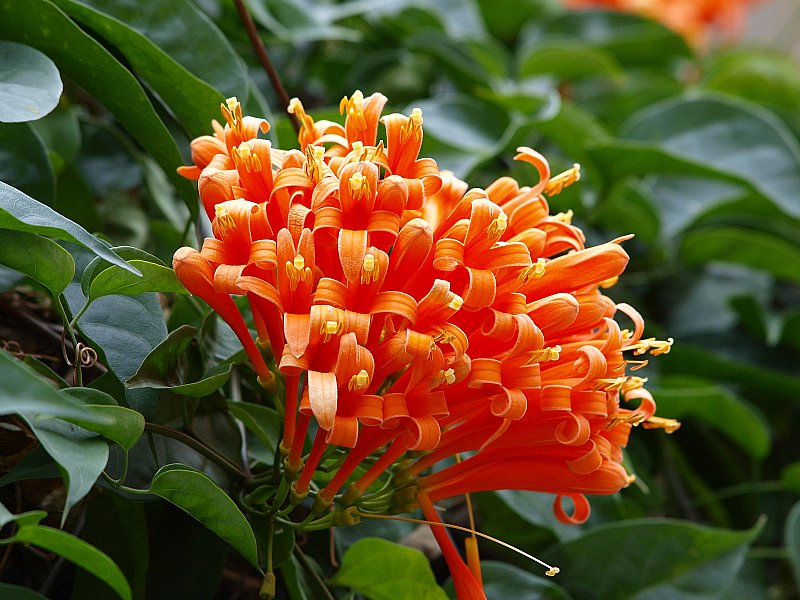The pruning method of lavender
Lavender flowers are the most abundant in essential oil, and flowers or inflorescences are mainly used. In order to facilitate harvest, some small inflorescences at the initial stage of cultivation might as well be leveled with large scissors, and the new inflorescences are high, which is beneficial to the second harvest. Some varieties can reach a height of up to 90 centimeters, and this method is also used to make the plants low and make them more branched, blossom and increase the yield.
Lavender must be pruned after flowering, and the plant can be pruned to the original 2max 3, which will be sturdier and conducive to growth. Pruning in cold seasons such as spring and autumn, pruning in spring, pruning in autumn will affect cold resistance. Be careful not to cut the textured part when pruning, so as not to weaken the plant and die.
Just leave them in the shade in summer. You have to top the twig when it grows to about 10 centimeters, otherwise it will be textured, and the leaves at the bottom will dry up after it is textured, which is very ugly. Picking the heart and hitting the top all refer to the timely pruning.
Quality is the grass to resist the harsh environment, from the grass to the grass, the tree is more tenacious than the grass life. Due to the lack of ventilation around the roots, or the lack of timely pruning of the top of the leaves, the nutrients could not go up, the leaves of the roots fell off and the branches became textured.
The way to prevent it is to trim it in time, once a week (half a centimeter and half centimeter each time).
The grass that has been textured will not be improved except for those with particularly well-developed roots that will re-issue new branches at the bottom. However, new plants can be obtained by cutting new branches, and attention should be paid to pruning to avoid texturization.

How to trim lavender? how to trim lavender?
Lavender flowers are the most abundant in essential oil, and flowers or inflorescences are mainly used. In order to facilitate harvest, some small inflorescences at the initial stage of cultivation might as well be leveled with large scissors, and the newly grown inflorescences are highly consistent, which is conducive to a harvest. Some varieties can reach a height of up to 90 centimeters, and this method is also used to make the plants low and make them more branched, blossom and increase the yield.
Lavender must be pruned after flowering, and the plant can be pruned to the original 2max 3, which will be sturdier and conducive to growth. Pruning in the cold season such as spring and autumn, generally pruning in spring, pruning in autumn will affect the cold resistance. Be careful not to cut the lignified part when pruning, so as not to weaken the plant and die.
Just leave them in the shade in summer. You have to top the twig when it grows to about 10 centimeters, otherwise there will be Lignification, and the leaves at the bottom will dry up after Lignification, which is very ugly. Picking the heart and hitting the top all refer to the timely pruning.
Lignification is lavender to resist the harsh environment, from grass to wood, trees are more tenacious than grass. Due to the lack of ventilation around the roots, or the lack of timely pruning of the top of the leaves, the nutrients could not go up, the leaves of the roots fell off and the branches became woody.
The way to prevent it is to trim it in time, once a week (half a centimeter and a half centimeter each time).
Lignification of lavender, except for a few particularly well-developed roots will re-issue new branches at the bottom, generally will not be improved. However, new plants can be obtained by cutting new branches and pay attention to pruning to avoid Lignification.
The above is a simple summary of how to trim lavender and how to trim lavender. Lavender, like other plants, needs plenty of sunlight. Lavender is more resistant to drought, but afraid of waterlogging, so it is necessary to avoid excessive stagnant water in the basin soil, resulting in rotten roots. Lavender is a good cultivated plant because of its rich fragrance and charming color.
Lavender pruning method lavender flowers are the most abundant in essential oil, and flowers or inflorescences are mainly used. In order to facilitate harvest, some small inflorescences at the initial stage of cultivation might as well be completely trimmed with large scissors, and the newly grown inflorescences are highly consistent, which is conducive to a harvest. Some varieties can reach a height of up to 90 centimeters, and this method is also used to make the plants low and make them more branched, blossom and increase the yield. Lavender must be pruned after flowering, and the plant can be pruned to the original 2max 3, which will be sturdier and conducive to growth. Pruning in the cold season such as spring and autumn, generally pruning in spring, pruning in autumn will affect the cold resistance. Be careful not to cut the lignified part when pruning, so as not to weaken the plant and die. Just leave them in the shade in summer. You have to top the twig when it grows to about 10 centimeters, otherwise there will be Lignification, and the leaves at the bottom will dry up after Lignification, which is very ugly. Picking the heart and hitting the top all refer to the timely pruning. Lignification is the grass resistance to the harsh environment, from grass to wood, trees are more tenacious than grass life. Due to the lack of ventilation around the roots, or the lack of timely pruning of the top of the leaves, the nutrients could not go up, the leaves of the roots fell off and the branches became woody. The way to prevent it is to trim it in time, once a week (half a centimeter and a half centimeter each time). Lignified grasses will generally not be improved except for those with particularly well-developed roots that will re-send out new branches at the bottom. However, new plants can be obtained by cutting new branches and pay attention to pruning to avoid Lignification.
- Prev

Culture methods and matters needing attention of Houttuynia cordata Thunb
Seed germination rate is not high, germination is suitable for 17-25 degrees Celsius temperature change, germination rate is about 20%. It can be propagated by ramet, cuttage and rhizome. Ramet propagation is from late March to April, and the mother plant can be dug up and transplanted on the seedbed of sandy soil or directly transplanted. Cuttings can be propagated in spring and summer.
- Next

Culture methods and matters needing attention of firecrackers
Strip propagation or cuttage propagation. Striping propagation can be carried out in spring or summer, rooting begins in about January, and the mother plant can be separated and transplanted in about March. Cuttings are also propagated in spring and summer. Cultivation sites should be sunny, ventilated and cool. Firecrackers are not strict with the soil.
Related
- Fuxing push coffee new agricultural production and marketing class: lack of small-scale processing plants
- Jujube rice field leisure farm deep ploughing Yilan for five years to create a space for organic food and play
- Nongyu Farm-A trial of organic papaya for brave women with advanced technology
- Four points for attention in the prevention and control of diseases and insect pests of edible fungi
- How to add nutrient solution to Edible Fungi
- Is there any good way to control edible fungus mites?
- Open Inoculation Technology of Edible Fungi
- Is there any clever way to use fertilizer for edible fungus in winter?
- What agents are used to kill the pathogens of edible fungi in the mushroom shed?
- Rapid drying of Edible Fungi

